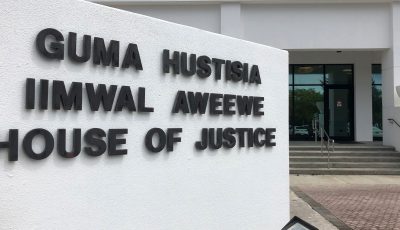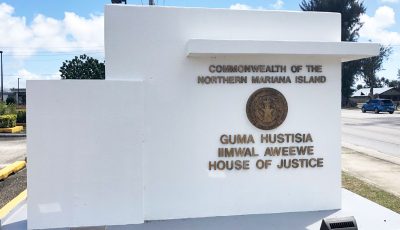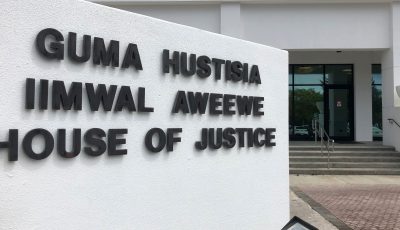High court affirms aggravated assault convictions
On Dec. 28, 2015, the Supreme Court affirmed the trial court’s judgment that convicted Arinna Reiong and Norna Tipingeni of aggravated assault and battery.
In Commonwealth v. Reiong, 2015 MP 13, Reiong and Tipingeni argued that the evidence was insufficient to convict them of aggravated assault and battery, and the trial court erred by failing to read the lesser-included offense instructions to the jury.
Appellants asserted that the victim did not suffer from a “serious bodily injury,” an essential element of aggravated assault and battery. “Serious bodily injury,” is defined under 6 CMC § 103(o) as an injury that “creates a high probability of death…causes serious permanent disfigurement, or…causes a permanent or protracted loss or impairment of the function of any bodily member or organ, or other bodily injury of like severity.” In support of their argument, appellants maintain that the “other bodily injury of like severity” phrase of § 103(o) does not broaden the statute, and the victim’s injuries did not create a high probability of death, cause serious permanent disfigurement, or cause a permanent or protracted loss or impairment of the a bodily member or organ. Because the victim did not suffer an injury explicitly listed in § 103(o), appellants reasoned that their aggravated assault and battery convictions must be reversed.
In paragraph nine of the opinion, the high court found appellants’ interpretation of § 103(o) unpersuasive because proper statutory interpretation seeks to provide meaning to every word of a statute, noting that “[t]he Legislature would not have included the ‘other bodily injury of like severity’ phrase if it intended for that phrase to be meaningless.” The high court held that serious bodily injury under § 103(o) “encompasses not only the injuries explicitly set forth in § 103(o) but also other injuries that are of similar severity.”
The high court then stated the injuries suffered by the victim were similar to those sustained by other victims in cases that upheld convictions requiring an elevated form of injury. Specifically, the victim here suffered from the following as a result of the attack: a bloody nose and mouth, difficulty breathing and understanding, an inability to walk, pain when moving her head, headaches and dizziness months after the attack, memory loss, and loss of hair. Furthermore, the Supreme Court acknowledged the attending physician assistant’s corroborating testimony regarding the severity of the victim’s injuries. Based on the evidence and rulings in other similar cases, the high court concluded that a reasonable juror could have found the evidence sufficient to make a serious bodily injury determination.
Next, appellants argued that the trial court erred by refusing to give a lesser-included offense instruction to the jury. The high court reaffirmed its decision in Commonwealth v. Guiao, 2015 MP 1, stating that the trial court does not err by declining to read to the jury instructions of lesser-included offenses that are bench charges. Like Guiao, the high court concluded that a rational juror could not have convicted the appellants of those charges because those charges were to be determined by the bench—not the jury.
The high court’s full opinion is available at http://www.cnmilaw.org/supreme15.html. (NMI Judiciary)



























